Jean Michel BASQUIAT, a tortured genius?
Jean-Michel BASQUIAT, a tortured genius; or not?
Artlover107
Recollections by his friend and studio assistant John Seed:-
“When I met Jean-Michel Basquiat in 1983 he came to the door naked. I had been sent to the place he was living in Venice, California by an art dealer who was planning a show for him. It was going to be my job to make his stretcher bars and canvasses, and to do errands in general. He had probably just woken up ( it was early afternoon ), and led me into the gallery space he was living in and wrapped himself in a towel.
He was living in a room that had only two pieces of furniture that I remember: a mattress with no box spring and a small TV set set at the head of the mattress. As I later learned that he had once lived in a cardboard box in a New York park, the lack of furniture must have been a habit. However, the floor was covered with an amazing array of clutter: art history books, cassette tapes, art supplies, and clothing including lots of paint spattered Armani that I took to the dry cleaners in a plastic garbage bag. Then there was the more: lots of drawings on the
floor, many having been walked on, art supplies including oilsticks, paintbrushes and rollers, and last, but not least, bags of marijuana, and wads of cash.
Jean-Michel never drove that I knew of, (an ancient Dodge that he had planned to use in LA had been stolen) so I began to go over often, first to deliver the stretchers for him to paint on, and later to pick him up to run errands. Some of the errands were very strange. Once when his
current girlfriend Madonna (whose music career was just beginning) came from the East Coast to visit, I took him to the bank to get $5,000 cash, which he wanted for a weekend date in San Francisco. Another time, we walked into a local paint and hardware place and just cleaned out the art supply section. Jean-Michel, who really cultivated a rasta street kid look paid by tossing random piles of big bills on the counter so that the amazed cashier could do the counting.
Another time I took him to a doctor who was an art collector, where he was being treated for an illness by trading art. On the way home he asked me to stop at a sandwich place he liked in Beverly Hills. He got out, and told me to just take a spin around the block and pick him up. I got stuck in heavy traffic, and it took 20 minutes to get back. When I got there he didn't say a thing, but three weeks later he walked up to me and gave me an utterly detailed description of how I should have taken certain back alley, and used a less busy street. It was things like this that begain to show me how intense and paranoid he was... Jean-Michel could remember details and spew them out with real intensity at a random moment, and that essentially is what I began to realize his art was often about: intensely felt, but fragmented experience and knowledge.
Once I told him that he needed to make investments, and that he ought to get a stockbroker so that if his career burned out he would have something. He was dumbfounded, and carefully explained that there was absolutely no need for him to plan for the future. At that point I had
begun to call him "Elvis", so he came up with "White Sambo Gringo" for me, his white valet.
My main job, besides taking Jean out to buy art supplies and running him around town. was to build his stretcher bars, and prime them for his late night painitng sessions. Among my creations were some three part canvases, joined by Douglas Fir 1 x 2's and braced by plywood
corners made from shipping crates that came to the Gagosian Gallery.
One of these canvases, which I had primed with black gesso, became the "Horn Players" now in the Broad Family Collection. Jean Michel, contrary to what you might think, absolutely did not consider himself a "Grafitti Artist". He had some friends like Ramelzee who did use that phrase to describe themselves, but Jean once hung up on a woman reporter who kept telling him that he was part of the Grafitti movement.
He had always seen himself as a Fine Artist, and his influences ranged from Leonardo Da Vinci to Abstract Expressionists like Cy Twombly and Franz Kline. The influence of these and other artists is apparent in his best works.
Our relationship began to really deteriorate, suprisingly, when I bought one of his paintings from the dealer. I had some money saved, and since I was living at home and not paying rent, I could put my whole salary into the painting, and came up with $5,000 after three months. Jean-Michel called me at home after I had paid it off, and insisted that I return it to him. He said that it should go to a "major collector". When he told me "I have only done two portraits, Francesco Clemente, and Andy Warhol, so I will do your portrait and it will be my third" I gave in and returned the painting "Future Science Versus the Man"
Jean-Michel was having all kinds of tension with the people who were buying, or expressing interest in his work. The best example of this that I remember was when the famous art collector Marcia Weisman came to visit his studio. Mrs. Weisman, who was a founder of the Museum of the Museum of Contemporary Art in Los Angeles, and the sister of famed collector Norton Simon, had heard about Jean, but when she arrived at his studio, things didn't go well. While she looked awkwardly at his work he became defensive and worked on a drawing in crayon on a very large piece of butcher paper. The drawing showed a sort of frightening caveman holding a bone, like a parody of a "primative". As Marcia was getting ready to leave he added a penis and balls to the image, and later told us that it was his image of her.
He had his big show in the Spring of 1983, with the painting I had returned on the front of the invitation. The opening was jammed, and he showed up very late and very stoned, listening to a Walkman. I think he really couldn't handle the social pressure. A few weeks later, he went back to New York and moved into a loft he leased from Andy Warhol. When I got the job of cleaning up after him, I found my portrait in the detritus. It was one of the cheap canvasses we had bought that one day at the paint store, and it had a splased red circle in the center. On the bottom, it had my name followed by "White Sambo Gringo", and a red arrow pointing down.
I sent my portrait back to New York in a crate, and assume it went in a dumpster a decade ago. When I think of it, I remember what Picasso once said "Anyone who likes my art is a masochist".
As I saw, Jean-Michel could be pretty awful. He also could be strangely kind and passive. He was very paranoid about the people around him, and he certainly was right to be that way, as everybody was using him.
Many people who were around at the time stole drawings and money from him, and I tend to think that he liked to be stolen from: he could then amaze the thief by confronting them and knowing exactly what they stole.
Putting aside the bad experiences of him, I have to say that he made a positive impression on me as an artist. He really had what I call "second nature" which means that his art was utterly direct and in touch with deep emotions. I do think of his art as being poetic, and also about the alchemy of signs and symbols. He definitely made powerful art about the problems of race, but I think that his most important contribution was has approach to art making.
I was very fortunate to know him at the peak of his creativity, but also unfortunate to see his growing paranoia and distrust of those around him.”

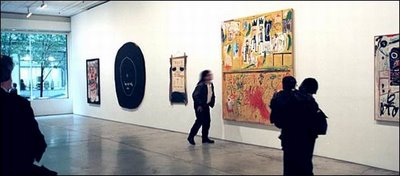

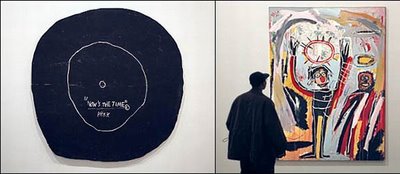
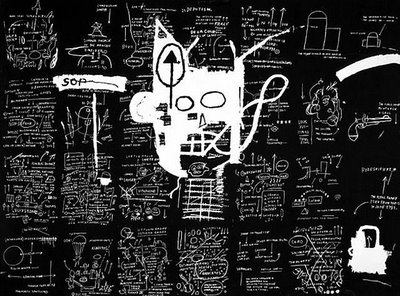
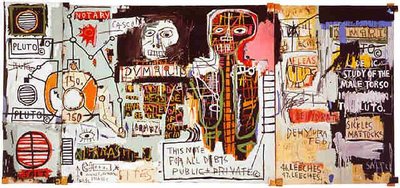
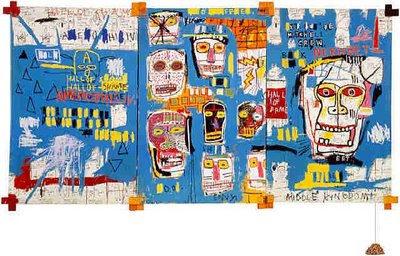

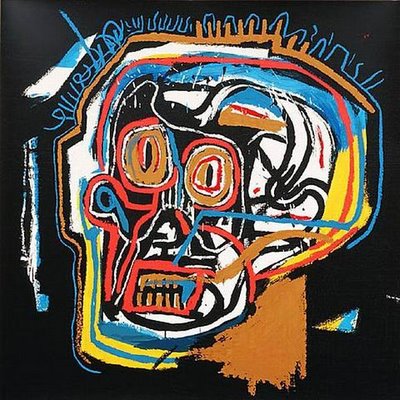
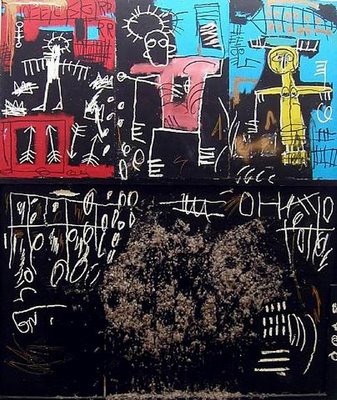

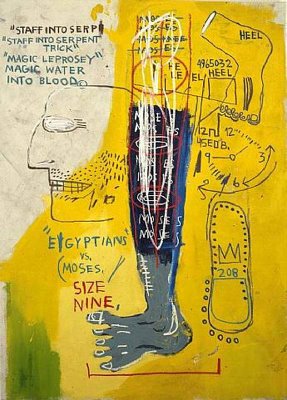



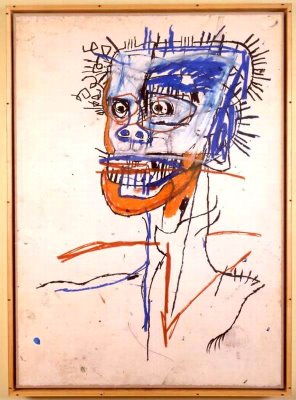


0 Comments:
Post a Comment
Subscribe to Post Comments [Atom]
<< Home